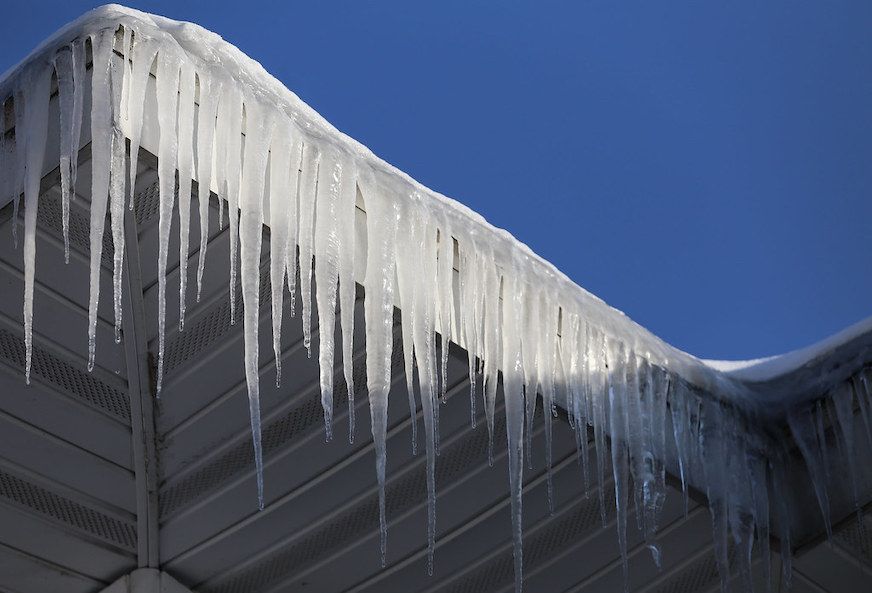
Winter Ice and Its Impact on Your Roof: Essential Tips for Homeowners
Winter ice can be more than just a picturesque addition to your home’s exterior; it can pose significant challenges to your roof. If not properly managed, ice buildup can lead to damage that compromises the integrity of your roofing system. Here’s what homeowners should know about how winter ice affects roofs and what to do to prevent costly repairs.
The Dangers of Ice Dams
What Are Ice Dams? Ice dams form when snow on your roof melts and refreezes at the edge, creating a barrier that prevents proper drainage. Water that backs up behind the ice can seep under shingles and into your home, causing leaks and water damage.
Why They Form: Ice dams usually form when the upper portions of the roof are warmer than the edges. This temperature difference can occur due to poor attic insulation, heat escaping from the home, or inadequate ventilation.
Prevention Tips:
- Ensure your attic is well-insulated to keep warm air from reaching the roof surface.
- Install roof vents to improve air circulation and maintain an even temperature.
- Use heated cables along the roof’s edge as a preventive measure to keep ice from accumulating.
Frozen Gutters and Drainage Issues
The Problem: Ice can accumulate in gutters, causing them to become heavy and potentially pull away from the roof or house. This added weight can damage the fascia and lead to water pooling at the roofline, increasing the risk of leaks.
Solution: Clean your gutters before winter to ensure they are free of debris that can trap ice. Installing gutter guards or heated gutter systems can help prevent ice from forming and ensure water flows freely.
Shingle and Material Expansion
Impact: Ice can cause roofing materials to expand and contract. When temperatures fluctuate, the freeze-thaw cycle can lead to small cracks that widen over time. This process weakens the roof’s surface, allowing water to penetrate beneath the shingles and into the roof deck.
Tip: Regularly inspect your roof for damaged or loose shingles and have any issues repaired before winter sets in. If your roof is aging, consider upgrading to materials designed to withstand cold weather more effectively.
Icicles: Beauty with a Hidden Cost
What They Indicate: While icicles can add a picturesque winter charm, they may signal that heat is escaping from your attic, melting the snow on your roof. The water runs down and refreezes at the roof’s edge, forming icicles and potentially ice dams.
Mitigation Strategy:
- Check for areas where heat may be escaping, such as attic hatches, vents, or recessed lights, and seal them.
- Improve insulation in your attic to reduce heat loss.
- Safely remove icicles when possible to reduce stress on gutters and prevent accidents.
Professional Inspections and Maintenance
Why It Matters: A professional roof inspection before and after winter can help identify potential vulnerabilities and hidden damage from ice. An experienced roofer can recommend solutions such as adding ice and water shields or reinforcing your roof structure to better handle the winter weather.
Take Action Early: Schedule a roofing inspection in the fall to make any necessary repairs and prepare your roof for the harsh winter months. Post-winter checkups can ensure any ice-related damage is addressed before it becomes a larger issue.
Contact UsWinter ice can be a serious threat to your roof, but with the right preventive measures, you can protect your home from damage. Proper insulation, regular maintenance, and proactive solutions like heated cables can make all the difference. Don’t let winter ice catch you off guard—prepare now to keep your roof strong and resilient throughout the season. Contact JVW Contracting with any questions or for a free roofing estimate.